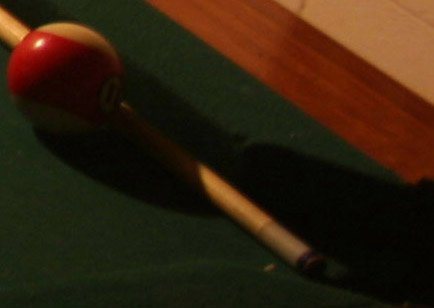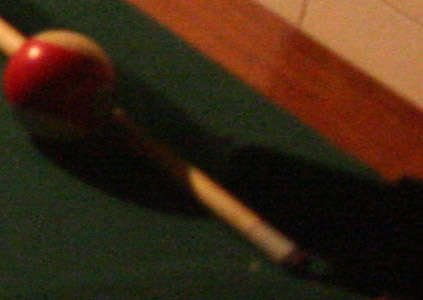The Canon Digital Rebel XT
| Type | Digital SLR | |
| Shutter Range | 1/4000 to 30 seconds | |
| Shutter Type | Vertical Travel, Electronically Timed Focal Plane | |
| Meter Type | Silicon 35 zone (capable of 9 % semi spot) | |
| Meter Range | EV 1 to EV 20 | |
| Exposure System | Multimode AE, and manual | |
| Lens Mount | Canon EF Autofocus S-compatable | |
| Battery | NB-2LH |
|
|
||||
| Sensor Type | CMOS | |
LCD Display | 1.8" color 144K pixels |
| Sensor Size | 22.2 x14.8 mm | Recording Media | Compact Flash | |
| Sensor Resolution | 8 MP (3456x2304) |
File Size | 3.3 mb |
|
| Focal Length Compensation | 1.6 | Film Speed Equiv. | ASA 100-ASA1600 | |
The Rebel series, is Canon's offering to the amateur or casual photographer, as opposed to it's pro oriented D, and DCS series. The Rebel has a plastic body, is a bit more
This is my fourth digital camera, and my second digital SLR. It was purchased for a trip to Alaska, specifically to permit the use of the new S series of lenses, offered by Canon for it's digital cameras. This new series of lenses addresses one of the big drawbacks of the new generation of digital SLR. This is the focal length compensation factor, required by the small size of the average digital imager unit. For most cameras, this is a factor of 1.6 to 1.
Focal length compensation can come in handy, for the nature photographer, or sports photographer. It can make a 200mm lens, act like a 320mm lens.. Unfortunately, for most photographers, wide coverage will be required far more often than extreme close up. The same focal length compensation that does such wonderful things for telephotos, will also turn your 28mm wide angle, into a normal lens, equal to a 42 mm. To get anything like a good wide angle coverage, with this type of camera, you will need to go with an 18mm, or even smaller. the problem here, is that lenses in this range are really expensive, and tend to be rather slow, as well as quite large. There are reasons for this, that I will cover in my section on the EF series of lenses.
The S series of lenses is designed specifically for the smaller imager, rather than the larger area of the standard 35 mm film camera. This means that it produces a smaller image circle. This in turn means that less glass can be used, fewer elements, and a smaller housing, making for a far less expensive lens. These new lenses emphasize the domination of digital cameras, and their ultimate replacement of the film camera. Initially, the ability to use standard 35 mm lenses on the new generation of digital SLR cameras was a big selling point. Now they are being replaced by a new series of digital only lenses, that will not mount on a standard 35mm film camera.
| The Effect of
Film Speed on Image Quality of the Digital Rebel |
||
 ASA 400 (cropped down from a much larger photo) |
A shot of a section of my pool table, in average
room lighting. Note that the ASA 1600 photo lacks the resolution,
and color rendition of the ASA 400. |
 ASA 1600 (cropped down from a much larger photo) |
One of the ways that digital cameras can fight back, and get more versatility, is by the use of film speed settings, and quality settings (parameters can also be used, but I do not use them, or know enough about them to really comment). This gives the user a bit of versatility, though not to the degree of that enjoyed by the film photographer. Still, the technology is moving along, and who can say what types of imagers might be a few years down the road. Of course, film and chemical technology are not standing still either. It will be interesting to see what developments lie ahead in both areas.
Film speed can be selected from a range of between ASA 100 and 1600. As with a classic film camera, at higher speeds, grain increases, color accuracy lessens, and sharpness decreases. Still, the low light photo you can get at ASA 1600, will be better than the missed photo at ASA 100. In practice, I keep the camera set at ASA 400, which seems to offer good speed, as well as good looking photos. The camera also allows selection of three different resolutions - 3456 x 2304, 2496 x 1664, or 1728 x 1152. Though I almost never use pictures at full size, I keep the camera set to the highest resolution.
Image quality can also be switched, between normal and high. In practice, with the large memory cards available today, I see little reason to shoot at anything other than high quality; but the option is there. The quality setting is different from the resolution, in the at it does not effect how the photo is taken. It affects how the photo is stored. Photos are stored in JPEG format, which is a compressed image format. At lower quality settings, the compression is increased. During compression, details are thrown away, intentionally, using certain pattern finding algorithms. During viewing, the same algorithms are used to reconstruct the original picture, and put back the missing details. The problem is that these details are gone, and have to be filled back in by the algorithm, which essentially "guesses" at what was thrown away during recording. The higher the compression, the more the detail that is discarded, increasing the amount of guessing that will have to be done by the algorithm during reconstruction.
| The Effect of
Image Quality Settings on the Canon Digital Rebel |
||
High Quality |
These two photos are taken of the exact same
subject, with the exact same exposure, under the exact same conditions.
Only the quality level has been changed. Some added detail loss can be seen
in the cross hatch pattern (this is a photo of a Fresnel lens) in the average
quality image. The difference here is not quite so striking, as in the photos
above; but will still be noticeable. With the huge size of modern
memory cards, there seems little point in shooting at anything but
the highest quality levels. |
Average Quality |
As
with all of the EOS series cameras, including the D30 and D60, the
Rebel has a number of different modes to which it can be set. There
are the automatic and programmed modes, as well as the following
series of AE settings collectively referred to as the Easy Shooting
Zone. Each member of the series is pre programmed to give good
results taking the following types of shots:
The memory cache of the Rebel permits shooting at up to
three frames per second, for a total of up to 14 frames. Size at
best resolution and quality is 3.3 MB, giving approximately 300
pictures per Gigabyte. At the smallest resolution, and lowest
quality, file size is 0.6 MB, giving 1650 pictures per GB. The
camera is able to handle CF cards of up to 32 GB, giving a
theoretical total of 9600 photos at highest resolution and
quality. I have never used such a large drive, and there may be a
lower true capacity, due to cluster size issues with the cameras FAT
32 file system. Wouldn't it be great if someone would develop a
camera that uses NTFS? Oh well.
This page is a work in progress; but should be finished by March - 2009. metering semi spot focus points |
||